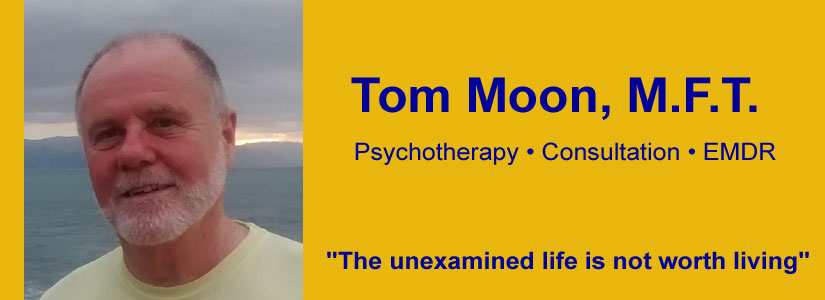It’s a truism that if we want to be happy in the present we need to find some measure of acceptance and peace in relation to the pain and disappointments of the past. Two powerful methods for achieving that peace are practicing forgiveness and cultivating gratitude. I’ll focus on forgiveness this time and gratitude in the next column.
Many people use psychotherapy to resolve their feelings about the past, and while some succeed, for others things seem to get worse. I think of a man I’ll call Greg, for instance, who has been in therapy for years, talking about his painful childhood – the abusive alcoholic father, the helpless, passive mother who couldn’t protect him, the bullies at school who identified him as the “school queer” and regularly beat him up while teachers looked the other way, and so on. He’s gone over each painful memory again and again. He’s expressed his hurt and rage. He’s cried and beaten up pillows, re-enacted his traumas in group therapy, and relived them in hypnotherapy. But the outcome of all his efforts is that he’s now more enraged, hurt, and unhappy than ever. There can be powerful healing in talking about the wrongs that were done to us, especially if we’ve kept them secret, denied that they happened, or blamed ourselves for them. But when the process becomes interminable it can magnify rather than relieve suffering. That’s because frequent and intense negative thoughts about the past tend to block feelings of contentment and satisfaction. Getting stuck in victimization, rage and vengefulness makes peace impossible.
Practicing forgiveness avoids this pitfall by transforming our relationship to painful memories from one of bitterness to something softer and more accepting. That’s it’s purpose – not to let perpetrators off the hook, or minimize the harm they did – but to set ourselves free. The question is how to do it.
Probably the leading investigator of this question is a psychologist named Dr Everett Worthington. A horrible incident in his own life was the catalyst which led him to study forgiveness. One morning in 1996, he received a call from his brother, who informed him that their mother had been raped with a wine bottle and beaten to death with a baseball bat and crowbar. For years afterward, Worthington struggled to free himself from the poison of hatred and vengefulness toward the two young perpetrators who committed the crime. In time he succeeded, and in the process developed a road map for intentional forgiveness which has since been traveled by many thousands. The acronym for his five-step process is REACH. He explains it in detail in his book Forgiving and Reconciling:-Bridges to Wholeness and Hope , but briefly, here’s how it works:
R stands for recall the hurt , in as clear and objective way as you can. Don’t think of the perpetrator as evil or wallow in self-pity. Breathe deeply and slowly as you remember the event.
E stands for empathize. Try to understand things from the perpetrator’s point of view. Imagine a plausible story that this person might tell if asked to explain. To help you do this, remember that: 1) When people feel that their own survival is threatened, they’ll hurt innocents; 2) People who attack others are almost always suffering fear, worry, and hurt themselves; 3) The situation a person finds himself or herself in, and not the underlying personality, can lead to perpetrating; 4) Often people aren’t thinking when they attack others; they’re just lashing out.
A stands for the altruistic gift of forgiveness. Remember a time when you did something wrong, felt guilty, and received forgiveness. Remember the gratitude you felt for this gift. Remember, too, that giving this gift to others usually makes us feel better and lightens our own load.
C stands for commit yourself to forgive publicly. In Worthington’s groups, clients write a letter of forgiveness to the perpetrator, write a “certificate of forgiveness,’ tell a trusted friend what they’ve done, or write a song or poem of forgiveness. These are contracts of forgiveness which lead to the final step.
H stands for hold onto forgiveness. Forgiveness doesn’t erase the memory of the event; it just changes the “tag line” that a memory carries. When the memories come, remember that they don’t, in themselves, mean that you’re unforgiving. Be careful not to dwell vengefully on the memories or wallow in them. Remind yourself that you’ve already committed to forgiveness, and read the documents you’ve written.
All of this may sound preachy and sentimental, but the fact is that in at least eight scientific studies of this process and others like it, sizable positive effects were demonstrated. Those who completed the process had less anger and stress, more optimism, better reported health, improved relationships and more forgiveness. The procedures aren’t easy or quick, but they work. Sober science confirms ancient wisdom: if you want to be happy, learn to forgive.
Next time: Cultivating Gratitude
